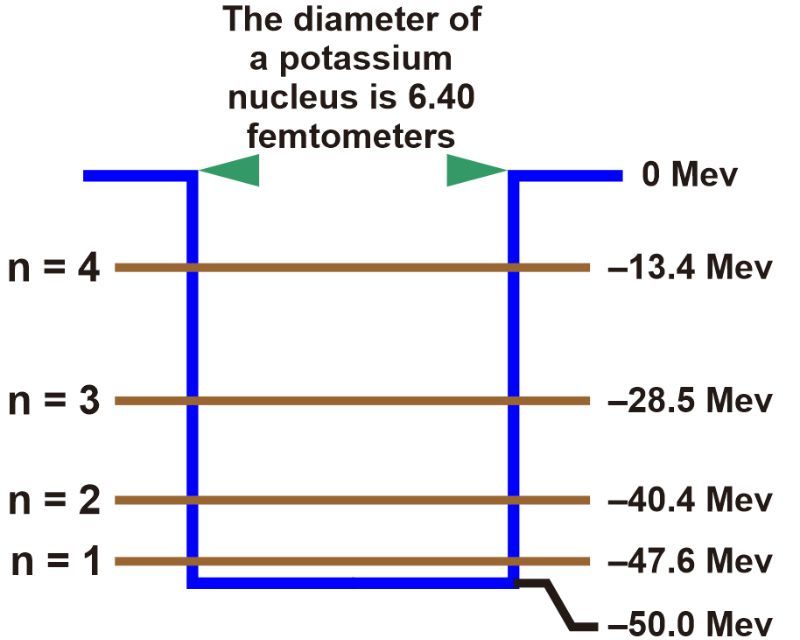- Download the worksheet to save time writing
- Start solving the practice problems
- If you're stuck, watch the video solutions
- See your summary to get more insights

An alpha particle (He-nucleus) is propelled toward a potassium nucleus (Z = 19). The diameter and energy levels of the nucleus are depicted in the figure below. Initially, the potassium nucleus is in its ground state. However, after the collision, it emits a photon with a wavelength of approximately 64.91 fm. Determine the minimum initial speed of the alpha particle. Hint: Consider the principle of energy conservation while analyzing the alpha particle-nucleus interaction.
A bioluminescent fish emits a light pulse with a peak intensity of 480 nm. Each light pulse lasts for a duration of 60 ms and has a power output of 2.7 mW. Assuming that all light is emitted at this specific peak wavelength, determine what the number of photons emitted during one pulse will be.
A nuclear research institute wishes to have a collision between a 32 MeV (at impact) alpha particle and a stationary polonium-209. Determine the kinetic energy of the alpha particle at the instant it is fired toward the polonium nucleus. Take the polonium nuclei to be rest at all times, and do not treat the alpha particle like a point particle.
